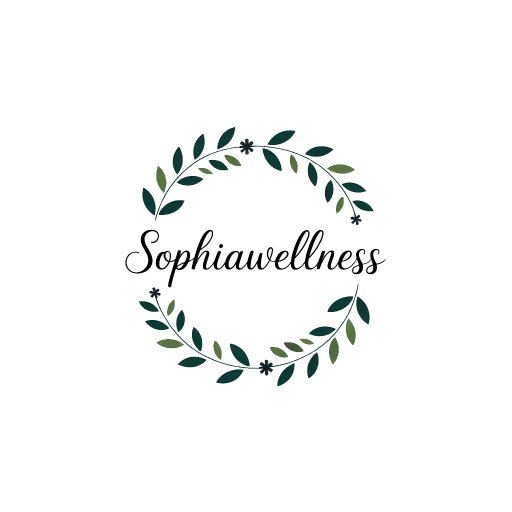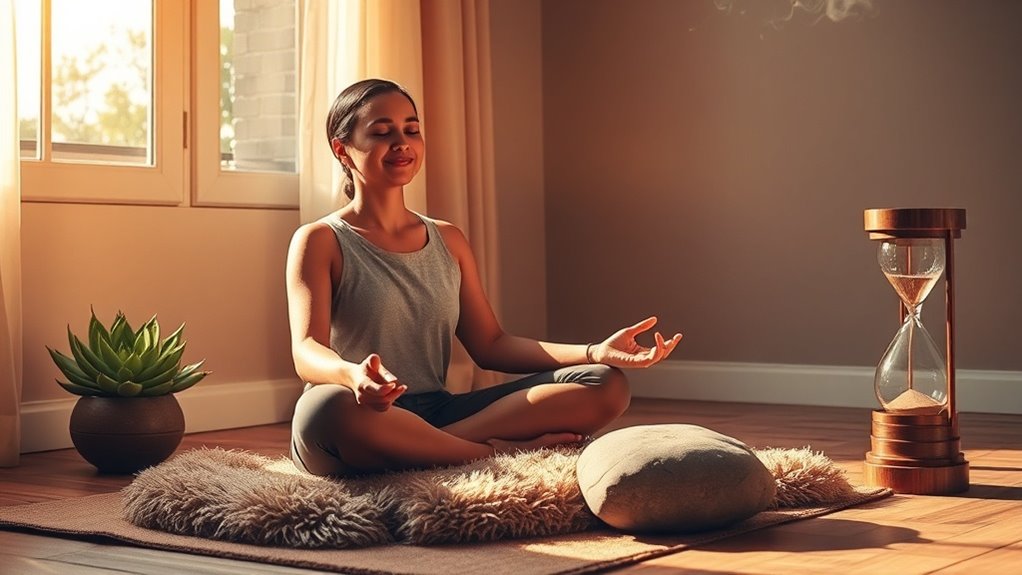These Breathing Exercises Are Like Magic for Anxiety
Understanding the Connection Between Breathing and Anxiety
When anxiety strikes, you mightn’t realize just how closely your breath is tied to your feelings. Quick, shallow breaths often accompany anxious moments, amplifying your discomfort. By focusing on your breathing, you can foster anxiety relief and regain control. Slowing and deepening your breath sends calming signals to your brain, helping you shift from panic to a more peaceful state. Incorporating deep breathing techniques into your routine can significantly enhance your overall stress relief.
Diaphragmatic Breathing for Instant Calm
Diaphragmatic breathing is a powerful technique that can bring you instant calm during anxious moments.
By learning the steps to practice it effectively, you can unlock benefits that help ease your anxiety and promote a sense of well-being. Additionally, practicing breathing techniques regularly can enhance your meditation practice and overall well-being.
Let’s explore how this simple yet impactful method can make a difference in your life.
What Is Diaphragmatic Breathing?
Breathing deeply feels refreshing, and diaphragmatic breathing harnesses this sensation to promote instant calm.
This technique focuses on using your diaphragm effectively, allowing your lungs to fill completely with air.
By engaging your core, you slow down your breath, which activates your body’s relaxation response.
It’s a powerful tool to help you regain control during anxious moments, empowering you to feel more grounded.
Steps for Effective Practice
As you prepare to practice diaphragmatic breathing, remember that these steps are designed to guide you gently toward a state of calm.
Begin by finding a comfortable position. Place one hand on your chest and the other on your belly.
Inhale deeply through your nose, allowing your abdomen to rise.
Exhale slowly through your mouth.
Repeat this process, focusing on your breath and relaxation.
Benefits for Anxiety Relief
Finding calm in the midst of anxiety is crucial, and diaphragmatic breathing can provide that relief almost instantly.
By focusing on deep, abdominal breaths, you activate your body’s relaxation response. This technique reduces your heart rate, lowers blood pressure, and helps clear your mind.
Practice it regularly, and you’ll find it easier to face stressful situations with a sense of peace and control.
Box Breathing: A Structured Approach to Anxiety Relief
When anxiety starts to feel overwhelming, using box breathing can provide a simple yet effective way to regain control.
This technique involves inhaling for a count of four, holding for four, exhaling for four, and holding again for four.
Repeat this cycle a few times. By focusing on your breath, you’ll ground yourself and create a sense of calm amidst the chaos. Additionally, incorporating this practice with mindfulness techniques can further enhance feelings of relaxation and control.
4-7-8 Breathing Technique for Relaxation
The 8 Breathing Technique is a simple yet powerful exercise that can bring you instant relaxation.
By following a few easy steps, you’ll learn how to regulate your breath and calm your mind, making it a great tool for managing anxiety. This technique is highly effective because it promotes mindfulness techniques that help center your thoughts and reduce stress.
Let’s explore the benefits this technique offers and how you can incorporate it into your daily routine.
Technique Overview
Although anxiety can feel overwhelming, practicing the 8-Breathing Technique can provide immediate relief.
This technique encourages you to focus on your breath, calming your mind and body. Here’s what you can expect:
- A sense of relaxation
- The ability to refocus
- Reduction in heart rate
- Enhanced emotional clarity
Steps to Practice
Start by finding a comfortable position, whether sitting or lying down. Follow these steps for the 4-8 breathing technique:
| Step | Action |
|---|---|
| Inhale | Breathe in for 4 seconds |
| Hold | Hold breath for 8 seconds |
| Exhale | Breathe out for 8 seconds |
Repeat this cycle several times, focusing on your breath and allowing tension to melt away. You’re doing great!
Benefits for Anxiety
Breathing exercises, like the 4-8 technique, can significantly reduce anxiety by promoting relaxation and grounding you in the present moment.
You’ll discover several benefits:
- Lowers heart rate
- Enhances focus
- Reduces stress levels
- Instills a sense of calm
Incorporating this practice into your routine can empower you to manage anxiety more effectively and help you reclaim your peace.
Alternate Nostril Breathing to Balance Energy
Feeling out of balance? Try alternate nostril breathing. This technique helps you harmonize your energy by calming your mind and body.
Begin by closing one nostril, inhaling deeply, then switch and exhale through the other. Repeat this process for several cycles.
As you focus on your breath, you’ll notice increased clarity and tranquility, bringing you back to a centered state. Incorporating mindful breathing techniques into your routine can further enhance your overall well-being.
Incorporating Breathing Exercises Into Your Daily Routine
Integrating breathing exercises into your daily routine can significantly enhance your overall well-being and help manage anxiety. Here are some simple ways to get started:
-
Set aside five minutes each morning to practice.
-
Use reminders on your phone to take a breathing break.
-
Incorporate exercises during lunch or coffee breaks.
-
Wind down with deep breathing before bed.
You’ve got this; small steps lead to big changes!





